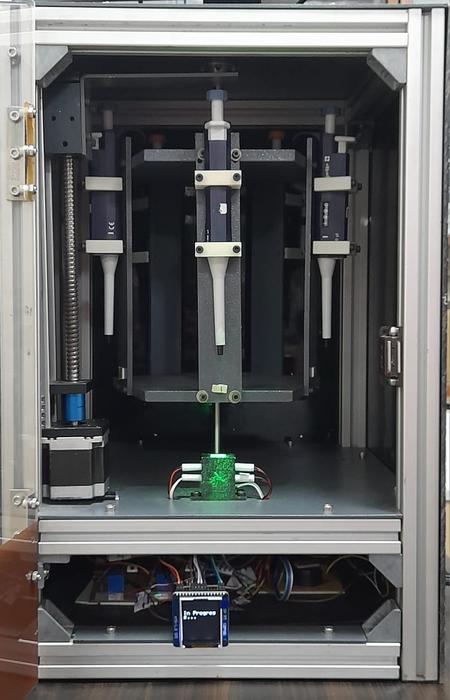
New Delhi — Researchers from the Indian Institute of Technology (IIT) Madras and Panjab University have developed a compact, automated optical device capable of detecting extremely low levels of toxic pesticide residues in water, food, and the environment — contaminants that pose serious risks to both human health and ecosystems.
Traditional laboratory-based methods for identifying pesticide residues, especially the widely used organophosphate Malathion, are costly, slow, and require trained experts. To overcome these limitations, the researchers – supported by the Department of Science and Technology’s ‘Technology Development and Transfer’ Programme – designed a field-ready, user-friendly device that enables real-time, ultra-sensitive detection.
The new device, called Smart MDD (Malathion Detection Device), is a colourimetric system that uses gold nanoparticles (AuNPs) paired with a specially engineered aptamer molecule that selectively recognises Malathion. When the pesticide is present, the interaction causes the solution to change colour from red to blue — a shift that the device’s built-in optical system detects and measures with precision. This automated approach eliminates manual steps and delivers quick, reliable results. The findings were published in Review of Scientific Instruments.
“This technology can have a significant real-world impact. It can help farmers, food safety agencies, and environmental regulators monitor pesticide contamination on-site — whether in irrigation water, produce, or soil — ensuring safety compliance and reducing public health risks,” said Prof. Sujatha Narayanan Unni from the Department of Applied Mechanics and Biomedical Engineering at IIT Madras.
She added that it could also be used to track pesticide runoff in water bodies, a growing environmental concern.
The team achieved a detection limit of around 250 picomolar and demonstrated strong correlation with laboratory spectrophotometer readings — performance levels rarely seen in portable devices.
Although currently tested under controlled lab conditions, the next phase involves validating the device using real-world samples, including fruits, vegetables, and water from agricultural fields.
“We also plan to expand the platform to detect a wider range of pesticides, strengthening its contribution to sustainable agriculture and environmental monitoring,” said Dr. Rohit Kumar Sharma from the Department of Chemistry and Centre for Advanced Studies in Chemistry, Punjab University.
With inputs from IANS